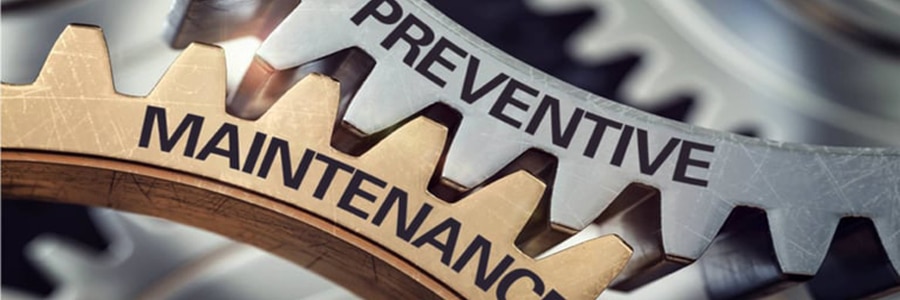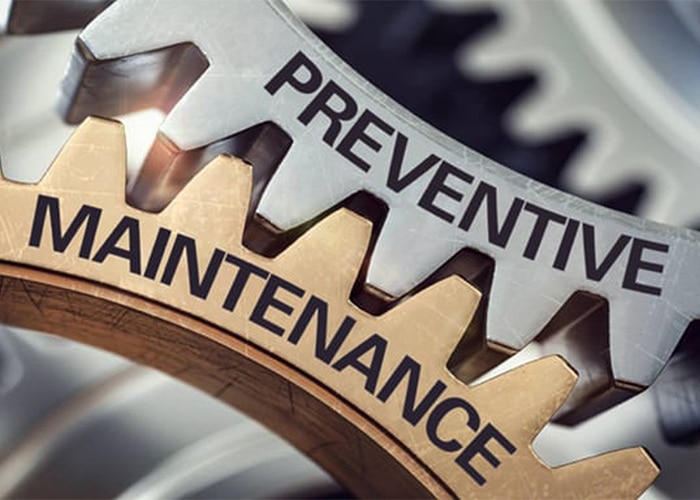A Pound of Cure
“Old ‘Cruncher’ here is built like a tank,” the fabricator said of his prize press brake. It was a well-constructed vintage machine from a brand that had a reputation for building quality equipment.
His friend asked, “I bet you have to do a lot of upkeep on it, right?”
“Not really,” the fabricator replied. “I just lubricate it now and then and it pretty much takes care of itself. The few times it’s broken down I’ve gotten it fixed in a couple of days and we’re back up and running.”
The friend left impressed, only to find a brand-new press brake in the man’s shop a month later. “What happened he asked?”
“It went on the fritz and the service tech said it was hopeless. He hinted that it could have been avoided with some preventative maintenance, but I think it was just Cruncher’s time to go. I scrapped it for parts and bought this new brake. Isn’t she a beauty?”
“Yes, it’s a very nice machine,” the friend admitted, then continued under his breath, “but it’s kind of a ‘pound of cure.’” Seeing the puzzled look on the fabricator’s face, he elaborated. “Sorry—that came out a little blunt. I was just thinking about something my grandma used to tell me. When I was little and broke something around the house, she would quote a saying from Benjamin Franklin that ‘an ounce of prevention is worth a pound of cure.’ It just sounds like the breakdown was preventable, but this really is an awesome press brake, and it probably was time you upgraded.”
“No offense taken,” the fabricator responded. “You’re right—it’s just hard for me to admit that I didn’t do what I should’ve done. I found out when I bought the new machine that I could have gotten a decent trade-in allowance on Cruncher if it was still running. I’m not going to make that mistake again—I copied the preventative maintenance schedule from the manual and taped it to the side of the new brake and we’re gonna follow it to the letter from now on.”
What Is Machinery Preventative Maintenance?
Metal fabrication machines—along with literally every other type of machine ever built—are no strangers to the concept of maintenance. When a machine starts to run funny, let alone when it breaks down, maintenance is performed to bring it back up to full working order. While this “corrective maintenance” is necessary to rectify problems, it is strictly a reactive measure. A better, more proactive approach is “preventative maintenance,” a carefully designed program that a company or individual can implement to help avoid known service issues and potential catastrophic failures.
Preventative maintenance is executed in a two-fold fashion: first, through the performance of routine checking, cleaning, lubricating, and other scheduled service of the machine; and second, by addressing small problems as they are detected before they can turn into something worse.
Implementing preventative maintenance practices on a machine can lead to:
- Maintaining the company’s reputation for reliability by keeping customer production at optimal levels.
- Saving money by making smaller planned financial expenditures in lieu of likely far more expensive repairs, as well as preventing the loss of revenue due to machine downtime.
- Improving operational efficiency by keeping the machine’s systems running smoothly and by being able to schedule maintenance during off-peak production hours.
- Providing greater safety for operators and bystanders by mitigating potential hazards that could lead to injury.
- Extending the longevity of the equipment by preventing some of the extra wear and tear that occurs in machines that aren’t kept in optimal condition for their age.
Preventative Maintenance Basics
Regular equipment upkeep varies by machine, but there are some basics that apply across most types of fabrication machines and should be considered when looking to implement preventive maintenance on a new purchase. They include:
- Developing a shop-wide philosophy of preventative maintenance that will be immediately applied to every new piece of equipment. Operators and shop staff should already be in the habit of following scheduled maintenance on current machines, as well as keeping work areas clean and hazard free.
- Installing new equipment properly. This involves determining the most effective location for a machine in the shop, having a licensed electrician run power to that spot prior to arrival, rigging the machine carefully when it arrives, and having oil, tooling, and other consumables in place. Trained service technicians should then take care of such tasks as leveling, anchoring, powering, and calibrating the machine.
- Ensuring that operators have been fully trained before they ever run a machine.
- Making copies of the machine manual and storing one offsite.
- Posting a copy of the preventative maintenance schedule on or near the machine.
- Requiring that operators begin and end each workday by cleaning the machine and its surrounding work area.
- Insisting that operators never exceed the capacities or other limitations of a machine.
- Training operators to properly attach tooling before each job.
- Backing up the programming of CNC machines on a regular basis.
- Insisting that any noises or other operational oddities, no matter how small, be reported to service staff to be checked out.
- Following maintenance schedules precisely, arranging big jobs around planned maintenance so that it is never postponed.
- Documenting all maintenance, problems, and repairs.
- Hiring a specialized service technician to perform in-depth preventative maintenance tasks on an annual basis.
- Considering purchasing maintenance contracts for larger or more important machines from a service center or the equipment dealer.
- Encouraging operators and shop staff to always use common sense around machines, especially if they notice anything out of the ordinary during operations.
If It Ain’t Broke, DO Fix It
Unaddressed problems tend to compound. Remember the last time you got a little chip in your windshield and assumed that it was okay to put off fixing it, only to have it turn into a massive web of cracks a few days later? The tiny rattle in your machine may be indicative of larger issues coming down the line. Metal fabrication machines are systems of interconnected components and the failure of one part can trigger failures in successive parts, leading to an overall cascade failure of the machine.
Cascade failure is not a new concept limited to modern machinery—the idea has been around for millennia, describing compounding problems in social and other systems. A proverb that dates to the 13th century describes how something as insignificant as losing a horseshoe nail could result in enormous adverse consequences. A common version of this proverb today is titled “For Want of a Nail.”
For want of a nail the shoe was lost.
For want of a shoe the horse was lost.
For want of a horse the rider was lost.
For want of a rider the message was lost.
For want of a message the battle was lost.
For want of a battle the kingdom was lost.
And all for the want of a horseshoe nail.
The attitude of putting off upkeep until a machine breaks down simply isn’t feasible in the competitive world of modern metal fabrication. Saving a little money on maintenance in the short term could result in a fortune lost on emergency repairs—or complete machine replacements—in the long run.
While ideally preventative maintenance for a machine begins upon purchase, if you haven’t been practicing it like you should, just start where you are. Have a trained technician do a complete overhaul of the machine in question, then stick to the recommended maintenance schedule going forward.
If the operators in your shop are careful, keep the equipment and their surrounding areas clean, use common sense, and strictly follow preventative maintenance timetables, you should be able to expect long and productive lifespans for your metalworking machines.







